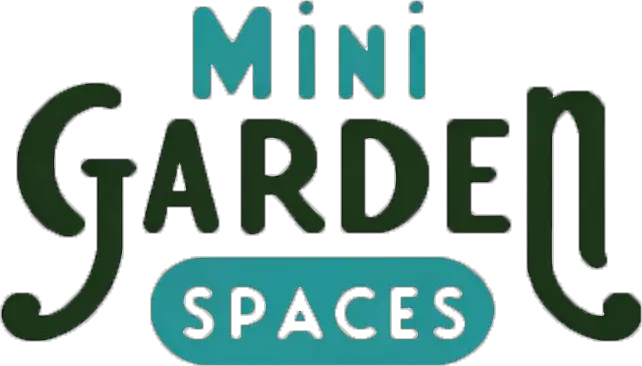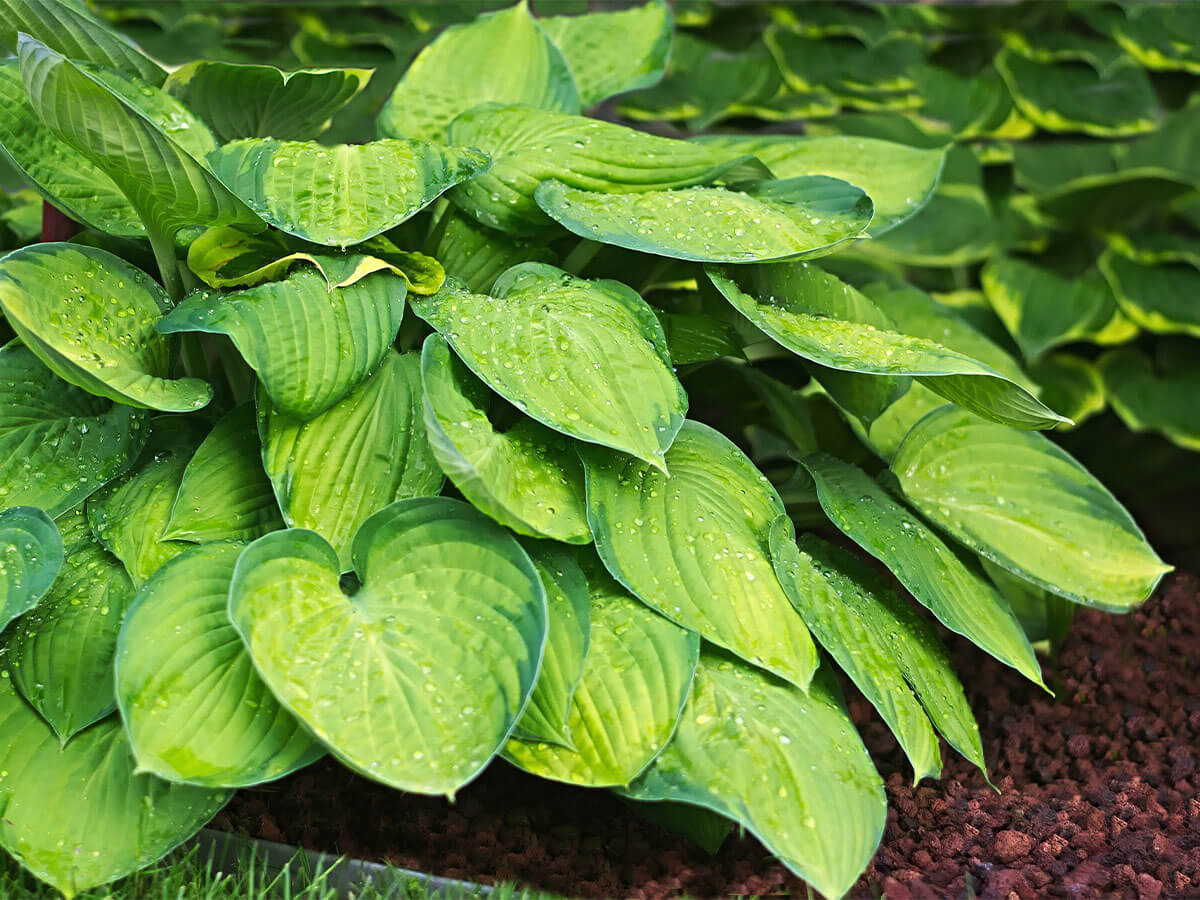18 Shade Loving Plants for a Small Shady Garden
March, 2023 |In many small garden spaces, one common issue you may find yourself dealing with is a lot of shade. You might have an urban garden surrounded by buildings. Or maybe a neighbor with some tall trees casting shade over your tiny plot.
The key to creating a thriving oasis in a shady garden is to embrace the shade and choose plants that thrive without the glare of the scorching sun. Luckily there’s an amazing variety of shade loving plants for you to include. From the colorful pinks and purples of foxglove or caladium to the delicate leafy fronds of ferns.
Related Read | 14 Shade Garden Design Ideas for Small Spaces
Shade Loving Plants for a Small Garden
While there’s a limited amount of vegetables to grow in shady conditions, there’s still an abundance of beautiful shade-loving plants. We’ve listed 18 popular, shade loving plants for you to browse.
Each of the plants on this list can deal with full shade, partial shade, dappled sunlight, or even light shade for the whole day. We’ll let you know the best conditions for each plant.
Looking for some bright colors too? We’ve included a variety of colorful shade-loving plant species that can help to brighten up a small garden space.
We’re starting with one of our favorites!
1. Paperplant (Fatsia japonica)
A perfect option for bringing a tropical flair to urban gardens. Fatsia japonica varieties have large palmate leaves that bring amazing structure and interest to a small garden.
It’s an evergreen plant, so it can provide year-round color and interest to your garden. One of my favorites is Fatsia japonica ‘Spiders Web’, which has beautiful white and green variegated leaves.
Paperplants can grow to over 6ft, with a similar spread, so you may eventually need to prune it to keep it manageable if your garden is really small.
Conditions: Full shade and partial shade.

2. Impatiens
In warm shades of pink, peach, orange, purple, and red, impatiens are lovely colorful shade-loving plants for a small garden.
They form low clumps of dense foliage topped with a sea of brightly colored flowers that bloom throughout the summer.
Even in full shade, they add a flush of color as trailing plants in hanging baskets, containers, or small borders.
Conditions: Full shade and partial shade.

3. Coral Bells (Heuchera)
Beautifully vibrant and a great plant to fill small gaps in a shady border. Coral Bells form clumps of loose, scalloped (usually evergreen) foliage, which on some varieties often reminds me of lettuce!
Each summer they’ll produce a stunning display of long-stemmed flowers too. You can find Coral Bells in a variety of shades, from bronze and purple to a bright green and silvery grey. Some coral bells even have vibrant pink foliage and richly pigmented black leaves.
Conditions: Prefers partial shade, summer sun could scorch the leaves, but deep shade can inhibit growth.

4. Ferns
Usually native to shady woodland floors, ferns are the perfect shade-loving plant for a small garden.
There are over supposedly over 10,000 different fern species, so you’ll definitely find one that catches your eye. Bronze or bright green, arching leathery leaves or delicate feathered fronds. Some ferns even have amazing silvery leaves, like the Painted Lady Fern (Thyrium niponicum ‘Metallicum’).
Not all ferns are evergreen, so double-check the plant label before buying. If you’re looking for something to add color and structure throughout the year, check out these evergreen ferns…
Some of our favorite evergreen ferns:
- Japanese Holly Fern
- Hart’s Tongue Fern
- Deer Fern
Conditions: Full shade and partial shade.

5. Bellflowers (Campanula)
With their delicate bell-shaped flowers, campanula is a beautiful addition to any garden. They thrive in partial shade, so they’ll work well in a container or border that receives a little bit of sun.
There’s such a wide variety to choose from. From trailing plants that work well in a container rock garden. To taller varieties like ‘Milky Bellflower’ which is a popular cottage garden flower.
Conditions: Partial shade.

6. Foxglove (Digitalis purpurea)
Foxgloves are known for their tall flower stems covered in bright pink tubular flowers. You can find varieties with peach, pink, cream, or white flowers too.
They’re another traditional cottage garden flower so a great option if you’re trying to recreate that particular garden style.
Foxgloves are toxic, so if you’re trying to make your small garden child friendly it may be one to avoid.
Conditions: Full shade, partial shade, and even full sun.

7. Coleus
Like Coral Bells, Coleus can provide brightly colored foliage in shady borders or containers.
One of the most striking varieties is Coleus ‘Water Melon’ which has beautiful variegated leaves in bright pink and green.
For something more subtle, ‘Silver Spurflower’ has beautiful, silvery leaves with dusky purple flower spires.
Conditions: Partial shade.

8. Ivy
Loved for its glossy and occasionally variegated foliage, ivy is a great way to add texture to a shady garden. They’re really popular trailing plants for hanging baskets, especially in shady parts of the garden.
As an evergreen climber, ivy is also one of the best evergreen plants to provide screening.
Some ivy species like Irish Ivy will thrive in full shade, whereas others will prefer being planted in partial shade.
Conditions: Full shade, partial shade.

9. Rodgersia
Known for its large green leaves with bronze edges, rodgersia is a lovely upright plant for a small shady garden. In summer it will produce long stems topped with dusky pink flower clusters.
Rodgersia prefers moist, shady locations in a garden. We actually recommend it as one of the best shade loving pond plants. If planting in a container make sure you keep the soil well watered.
Conditions: Full shade, partial shade, and even full sun.

10. Begonia
There are hundreds of begonia species, some known for their beautifully textured leaves and others for their showy blooms. Some popular varieties include:
- Begonia ‘Dragon Wing’ Red
- Begonia ‘Megawatt’ Bronze Leaf Rose
- Begonia ‘Maori Haze’
Like coral bells, begonias tend to prefer bright, indirect light, as full sun can scorch their leaves. So if your garden is in dappled shade from a nearby tree begonias are a great option.
Conditions: Partial shade.

11. Hellebores
As a late-winter flowering plant, hellebore is definitely a flower that’s used to low light levels. It’s also a great plant to bring color into a winter garden.
Most varieties have evergreen foliage, and in winter you’ll have a display of cream or dusky pink/purple flowers tinted with green.
Conditions: Full shade, partial shade.

12. Astilbe
Coated in feathery spires of tiny pink flowers, astilbe is a great way to bring color into a small shady garden space.
Its foliage will die back in winter, however, it’s a very hardy perennial (USDA zone 4-9) and will return each year to provide beautiful color each summer.
They stay in a compact shape, making them ideal for containers or small garden borders.
Conditions: Partial shade.

13. Hostas
Loved for their incredibly architectural leaves, hostas are a popular plant to include in shady gardens. Some of my favorite Hostas are ‘First Frost’ and ‘Blue Mouse Ears’.
‘Blue Mouse Ears’ hosta is a great dwarf plant to create a mini fairy garden — a fun idea for a child-friendly garden.
Hosta leaves are easily scorched in the midday sun, so they’re definitely best kept in shady, moist conditions.
Conditions: Full shade, partial shade.

14. Caladium
A beautiful, tropical-looking plant that thrives in shady conditions. You can find caladiums in a range of bold shapes and colors. They’re lovely colorful plants that can help to brighten a small shady garden. Especially varieties like ‘White Queen’ and ‘Red Flash’.
Caladiums are very frost-tender, so if you live in USDA hardiness zones 12 and below you will need to bring the bulbs inside before the frost hits.
Conditions: Full shade, partial shade.

15. Mahonias
Mahonias are hardy, enduring cold temperatures (USDA hardiness zone 6-9) but they’re also very adaptable too. They thrive in a variety of soils and lighting conditions, even shade!
They’re known for their spiked leaves and cascades of yellow flowers in autumn and winter. Mahonia is evergreen, so it can provide texture and interest in a small shady garden throughout the year.
Some mahonias can become very large, so double-check the variety before buying. They can however be easily pruned. The berries can also stain if stepped on.
Conditions: Full shade, partial shade, and even full sun.
16. Lily of the Valley
Lily of the Valley has wide, upright leaves and thin stems that end in a tiny display of white bell-shaped flowers.
Native to woodlands, they’ve evolved to thrive in shady conditions. In the wild, they can often be mistaken for wild garlic, however, they are actually toxic so they might be another one to avoid if you’re creating a child friendly garden.
Conditions: Full shade, partial shade.

17. Cyclamens
A lovely low-growing flower that works well in containers or at the front of shady borders.
Cyclamens are deciduous and die back in the summer. However throughout late winter and spring, they’ll have rounded, heart-shaped, grey-green leaves and a showy display of bright pink flowers.
Conditions: Partial shade.

18. Carex
For more neutral shades, Carex can provide a subtle softness to small urban spaces. Most species are evergreen, so throughout the year, you’ll have a display of rustling grass-like leaves adding texture and interest.
Carex ‘Ice Dance’ and Carex ‘Everest’ are two lovely variegated varieties. They’re hardy down to temperatures of around -4 Fahrenheit.
Conditions: Full shade, partial shade, and even full sun.







